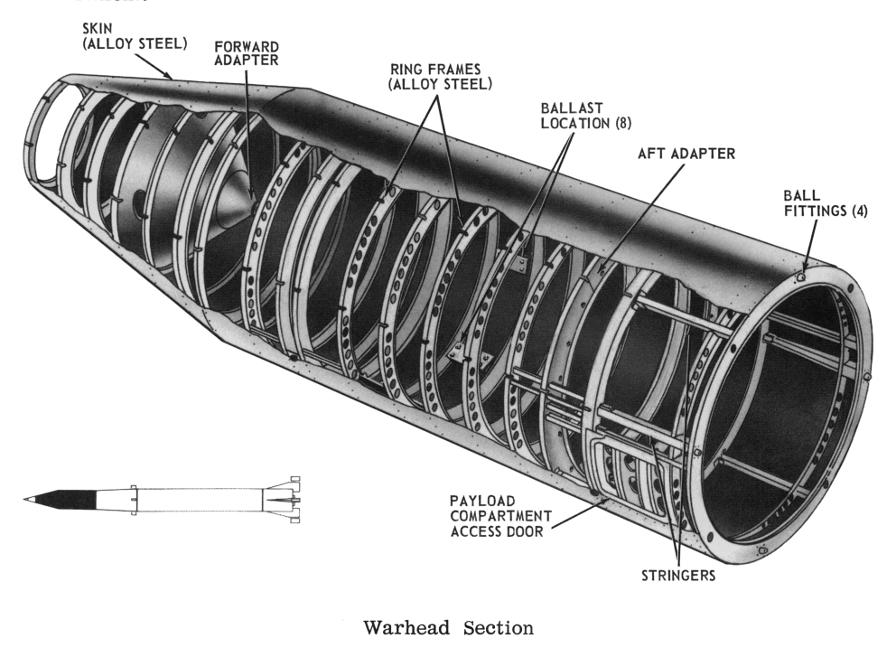Redstone Missile Warhead Section
This section of the Redstone missile is variously called the warhead section, payload compartment, or nose unit, but on this page I will settle on warhead section (because this is the section which carried the nuclear warhead). I suppose that the warhead was euphemistically referred to as the "payload," but the Redstone was, after all, designed to deliver a tactical nuclear weapon.
Along with the small radar fuze, the warhead section was the forward-most portion of the missile. The fuze and warhead section were permanently attached to the aft unit to form the missile body.
Click image for a 3968x2909 pixel version of this image in a new window.
Adapted from p. II-3 of This is Redstone, located in the Dunaway
collection, Dept. of
Archives/Special Collections, M. Louis Salmon Library, University of
Alabama in Huntsville. Available in electronic format from My Army
Redstone Missile Days
Scan, cleanup, and adaptation by heroicrelics.
Callouts in this diagram include
- Skin (alloy steel)
- Forward adapter
- Ring frames (alloy steel)
- Ballast location (8)
- Aft adapter
- Ball fittings
- Payload compartment access door
- Stringers
During re-entry, temperatures on the warhead section rose to 1000°F and pressures reached 95 psi. In order to allow it to withstand these conditions, the warhead unit was constructed of a skin of alloy steel that is riveted and welded to a framework of former rings, bulkheads, and stringers. All exterior surfaces were painted with zinc chromate to provide corrosion protection.
The forward-most ring frame was designed as a flange mounting for the fuze cone which was fastened to the nose unit with six machine screws. The aft-most ring of the warhead section had a flanged surface for mating the nose to the aft unit. The warhead section had four ball fittings on its aft former ring which bolted into aft unit's corresponding sockets, aligning and attaching the two units. Four additional attaching bolts that did not seat in ball fittings were also used. A silicone rubber gasket was fitted between the nose and aft unit to assure airtightness.
A conically shaped metal support, used as one of the mounting surfaces for the payload, was located near the forward end of the warhead section. The aft payload support of the payload compartment was flat and had a circular opening in the center section. The open center section of this support permitted access to the payload compartment for maintenance and was covered by the base of the payload. The payload base was seated against a silicone rubber gasket to provide an airtight seal. This seal was required because the payload support also formed the forward end of the aft unit's pressurized instrument compartment.
Two doors located in the aft end of the nose unit provided access to the payload compartment aft bulkhead. These doors were also fitted with silicone rubber gaskets to assure an airtight fit.
Much of the descriptive text on this page was taken from This is Redstone.

